-
 Bitcoin
Bitcoin $80,672.1300
-6.44% -
 Ethereum
Ethereum $2,117.3638
-9.62% -
 Tether USDt
Tether USDt $0.9991
0.02% -
 XRP
XRP $2.0290
-9.03% -
 BNB
BNB $571.7500
-6.27% -
 Solana
Solana $135.1890
-3.51% -
 USDC
USDC $0.9998
0.00% -
 Dogecoin
Dogecoin $0.1864
-10.93% -
 Cardano
Cardano $0.6003
-10.93% -
 TRON
TRON $0.2257
-1.56% -
 Litecoin
Litecoin $121.2351
-6.80% -
 Chainlink
Chainlink $13.8096
-11.61% -
 Avalanche
Avalanche $20.9455
-9.21% -
 UNUS SED LEO
UNUS SED LEO $9.0785
-0.30% -
 Toncoin
Toncoin $3.2644
-5.78% -
 Sui
Sui $2.6323
-9.46% -
 Stellar
Stellar $0.2635
-9.13% -
 Hedera
Hedera $0.1882
-6.08% -
 Shiba Inu
Shiba Inu $0.0...01325
-9.93% -
 MANTRA
MANTRA $7.4301
2.21% -
 Polkadot
Polkadot $4.5668
-9.83% -
 Hyperliquid
Hyperliquid $19.4267
-4.95% -
 Ethena USDe
Ethena USDe $0.9987
-0.06% -
 Bitcoin Cash
Bitcoin Cash $282.8770
-6.23% -
 Dai
Dai $0.9999
0.02% -
 Bitget Token
Bitget Token $3.8107
-7.28% -
 Uniswap
Uniswap $7.1366
-12.63% -
 Monero
Monero $208.9888
-1.60% -
 Aptos
Aptos $5.9038
-4.17% -
 NEAR Protocol
NEAR Protocol $2.8470
-8.55%
What is a 51% attack on blockchain?
A 51% attack occurs when an entity gains control over half of a blockchain network's hashrate, enabling it to manipulate transactions and potentially disrupt the network.
Feb 18, 2025 at 10:18 am
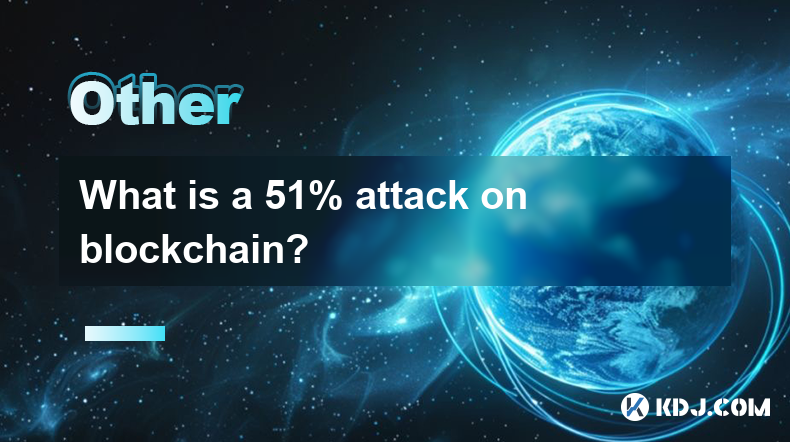
Key Points of a 51% Attack on Blockchain
- Explanation of a 51% attack in the cryptocurrency industry
- Potential consequences of a 51% attack on a blockchain network
- Ways to mitigate the risks of a 51% attack on a blockchain network
What is a 51% Attack on Blockchain?
A 51% attack on blockchain happens when a single entity gains control over half of the network's hashrate, enabling them to manipulate the network and reverse confirmed transactions. This can have severe implications on the security and integrity of the blockchain.
To maintain the integrity of a blockchain network, decentralized consensus mechanisms like Proof-of-Work (PoW) are employed. Miners validate transactions and add new blocks to the chain by solving complex mathematical puzzles.
An entity with 51% of the network's hashrate could manipulate the blockchain in several ways:
- Double-Spending: Reverse confirmed transactions and spend the same coins twice.
- Block Withholding: Prevent new blocks from being added to the chain, disrupting network activity.
- Chain Reorganization: Revert the blockchain to an earlier state, potentially erasing recent transactions.
Potential Consequences of a 51% Attack on a Blockchain Network
A successful 51% attack on a blockchain network can lead to significant consequences, including:
- Loss of funds: Double-spending can lead to users losing their cryptocurrency balances.
- Disruption of services: Block withholding can disrupt smart contract execution and DApp functionality.
- Network instability: Chain reorganization can create uncertainty and confusion among network participants.
- Reputational damage: A successful attack can damage the reputation of the blockchain project and its underlying technology.
Ways to Mitigate the Risks of a 51% Attack on a Blockchain Network
Several measures can be implemented to reduce the likelihood and impact of a 51% attack:
- Decentralization: Distributing hashrate across multiple miners makes it harder for any single entity to gain control.
- Proof-of-Stake (PoS) Consensus: PoS mechanisms reduce the need for excessive hashrate, making 51% attacks more expensive.
- Directed Acyclic Graph (DAG) Architectures: DAG-based blockchains can make 51% attacks computationally infeasible.
- Transaction Confirmation Thresholds: Requiring multiple confirmations before a transaction is considered final can mitigate the impact of double-spending.
- External Audits and Security Reviews: Regular audits and reviews can identify potential vulnerabilities and improve network security.
FAQs Related to 51% Attacks on Blockchain
Q: What is the likelihood of a 51% attack on a major blockchain network like Bitcoin?
A: The probability of a 51% attack on a well-established blockchain with a large hashrate and decentralized network is considered very low.
Q: If a 51% attack occurs, what can users do to protect their assets?
A: In the event of a 51% attack, users should remain vigilant and monitor their accounts for unauthorized transactions. They may consider moving their assets to a more secure wallet or exchange.
Q: Are there any specific blockchain networks that are particularly vulnerable to 51% attacks?
A: Smaller, less established blockchain networks with a low hashrate are more susceptible to 51% attacks. Miners with significant hashrate may be able to gain control of these networks relatively easily.
Q: Can a 51% attack compromise the integrity of a blockchain's smart contract functionality?
A: Yes, a 51% attacker could potentially manipulate smart contract execution by reversing or modifying transactions that trigger smart contract actions.
Q: What is the role of blockchain governance in preventing 51% attacks?
A: Blockchain governance mechanisms, such as multi-signature arrangements and decentralized voting protocols, can help prevent malicious actors from gaining excessive control over the network and potentially launching a 51% attack.
Disclaimer:info@kdj.com
The information provided is not trading advice. kdj.com does not assume any responsibility for any investments made based on the information provided in this article. Cryptocurrencies are highly volatile and it is highly recommended that you invest with caution after thorough research!
If you believe that the content used on this website infringes your copyright, please contact us immediately (info@kdj.com) and we will delete it promptly.
- Arizona Lawmakers Have Pushed Forward the Arizona Strategic Bitcoin Reserve Act
- 2025-02-28 20:25:33
- ChinaAMC Launches Hong Kong's First Tokenised Money Market Fund Targeting Retail Investors
- 2025-02-28 20:25:33
- The Dawn After the Recent Presidential Election Has Cast a Brighter Light on Cryptocurrencies
- 2025-02-28 20:25:33
- Top 5 Best Cryptos to Invest in the Dip
- 2025-02-28 20:25:33
- FBI Identifies North Korea as the Orchestrator of a Record-breaking $1.5 billion Cryptocurrency Heist
- 2025-02-28 20:25:33
- Introducing Darren 'Deggen' Kellenschwiler, Distributed Applications Lead at the BSV Association
- 2025-02-28 20:25:33
Related knowledge
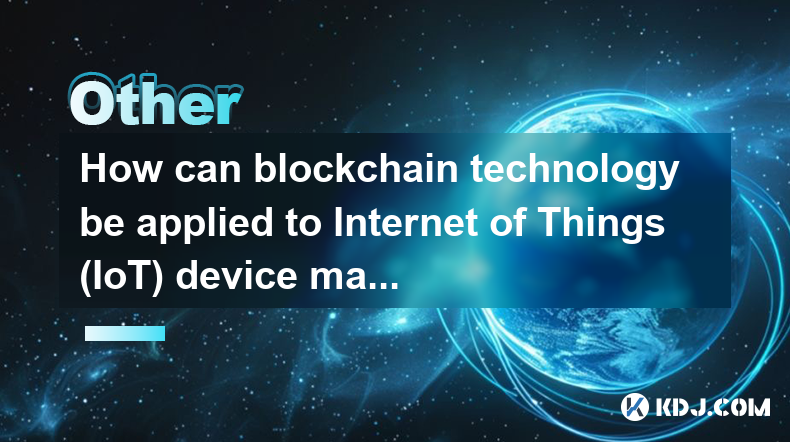
How can blockchain technology be applied to Internet of Things (IoT) device management?
Feb 28,2025 at 05:36pm
How Can Blockchain Technology Be Applied to Internet of Things (IoT) Device Management?Key Points:Enhanced Security: Blockchain's cryptographic security features significantly improve the security of IoT devices and data transmission, mitigating risks associated with vulnerabilities and unauthorized access. This includes securing device identities, firm...
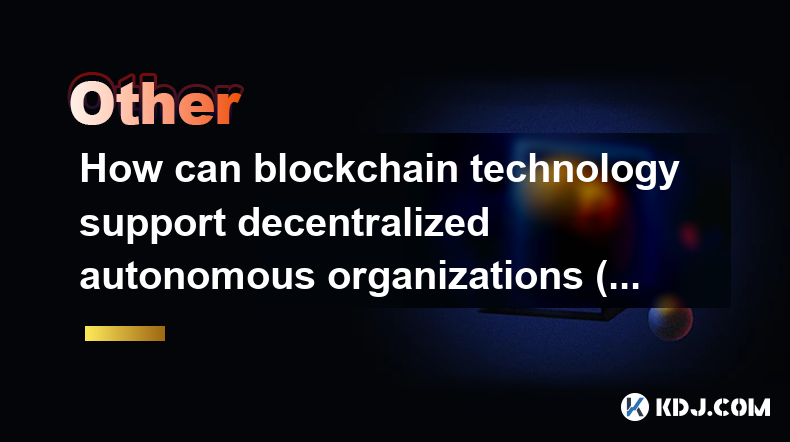
How can blockchain technology support decentralized autonomous organizations (DAOs)?
Feb 28,2025 at 02:43pm
How Can Blockchain Technology Support Decentralized Autonomous Organizations (DAOs)?Key Points:Transparency and Immutability: Blockchain's transparent and immutable ledger provides a verifiable record of all DAO transactions and governance decisions, fostering trust and accountability among members.Decentralized Governance: Blockchain eliminates the nee...
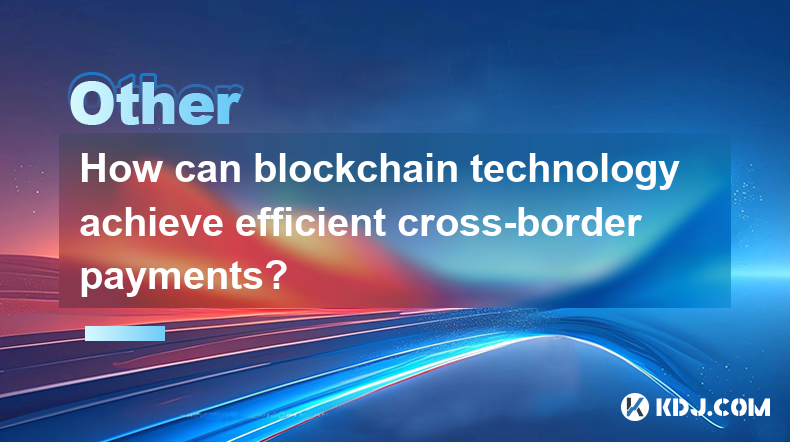
How can blockchain technology achieve efficient cross-border payments?
Feb 28,2025 at 11:37am
How Can Blockchain Technology Achieve Efficient Cross-Border Payments?Key Points:Enhanced Speed and Efficiency: Blockchain's decentralized nature eliminates intermediaries, reducing processing times significantly. This contrasts sharply with traditional cross-border payments which often involve multiple banks and clearinghouses, leading to delays.Reduce...
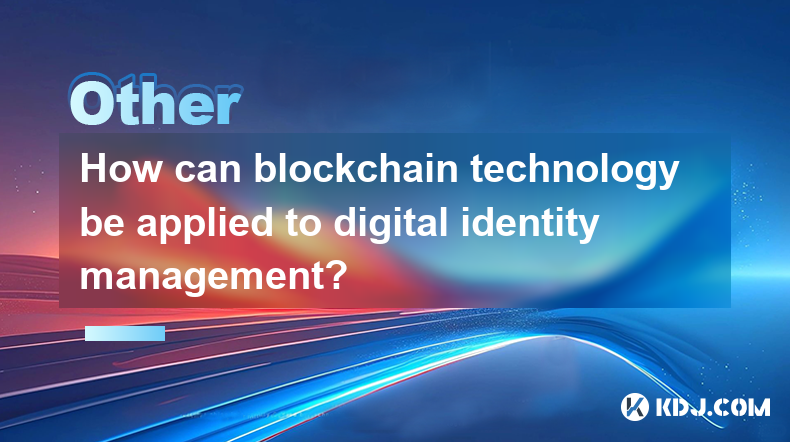
How can blockchain technology be applied to digital identity management?
Feb 28,2025 at 12:06pm
How Can Blockchain Technology Be Applied to Digital Identity Management?Key Points:Decentralized Identity (DID): Blockchain's decentralized nature allows for the creation of self-sovereign digital identities, giving individuals control over their data. We'll explore how this works and the advantages it offers over centralized systems.Enhanced Security a...
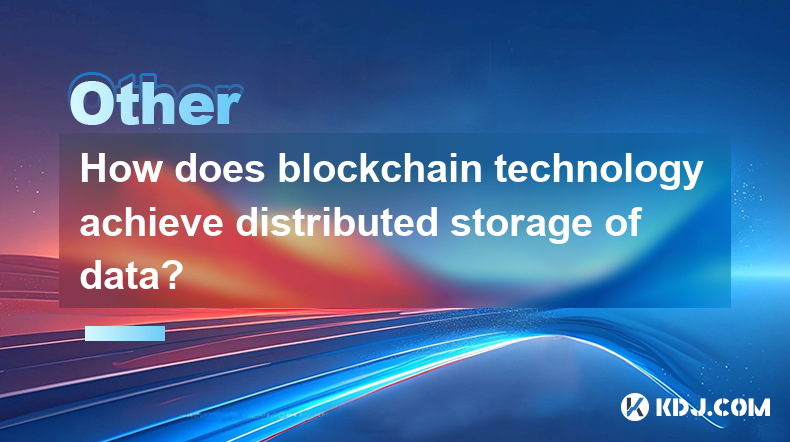
How does blockchain technology achieve distributed storage of data?
Feb 28,2025 at 03:42pm
How Does Blockchain Technology Achieve Distributed Storage of Data?Key Points:Decentralization: Blockchain's core strength lies in its decentralized nature, eliminating single points of failure and enhancing data security. We will explore how this decentralization is implemented and maintained.Hashing and Linking: The process of cryptographic hashing an...
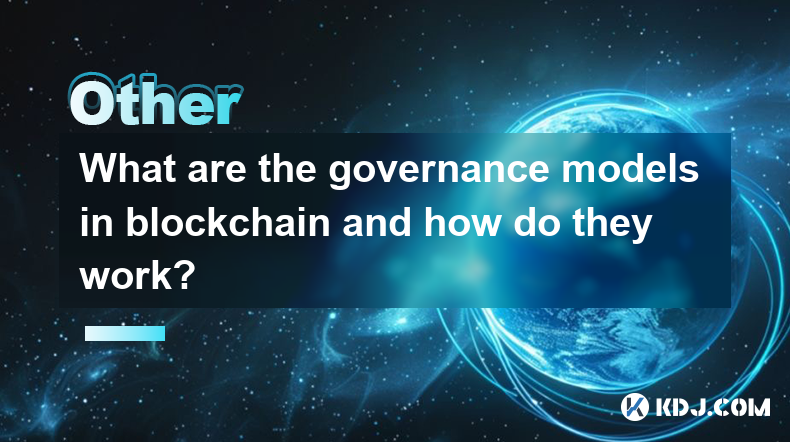
What are the governance models in blockchain and how do they work?
Feb 28,2025 at 12:48pm
What are the Governance Models in Blockchain and How Do They Work?Key Points:Decentralized Autonomous Organizations (DAOs): A community-driven model where token holders vote on proposals affecting the blockchain's future. We will explore the various voting mechanisms and challenges faced by DAOs.Proof-of-Stake (PoS) Consensus: A governance model where t...

How can blockchain technology be applied to Internet of Things (IoT) device management?
Feb 28,2025 at 05:36pm
How Can Blockchain Technology Be Applied to Internet of Things (IoT) Device Management?Key Points:Enhanced Security: Blockchain's cryptographic security features significantly improve the security of IoT devices and data transmission, mitigating risks associated with vulnerabilities and unauthorized access. This includes securing device identities, firm...

How can blockchain technology support decentralized autonomous organizations (DAOs)?
Feb 28,2025 at 02:43pm
How Can Blockchain Technology Support Decentralized Autonomous Organizations (DAOs)?Key Points:Transparency and Immutability: Blockchain's transparent and immutable ledger provides a verifiable record of all DAO transactions and governance decisions, fostering trust and accountability among members.Decentralized Governance: Blockchain eliminates the nee...

How can blockchain technology achieve efficient cross-border payments?
Feb 28,2025 at 11:37am
How Can Blockchain Technology Achieve Efficient Cross-Border Payments?Key Points:Enhanced Speed and Efficiency: Blockchain's decentralized nature eliminates intermediaries, reducing processing times significantly. This contrasts sharply with traditional cross-border payments which often involve multiple banks and clearinghouses, leading to delays.Reduce...

How can blockchain technology be applied to digital identity management?
Feb 28,2025 at 12:06pm
How Can Blockchain Technology Be Applied to Digital Identity Management?Key Points:Decentralized Identity (DID): Blockchain's decentralized nature allows for the creation of self-sovereign digital identities, giving individuals control over their data. We'll explore how this works and the advantages it offers over centralized systems.Enhanced Security a...

How does blockchain technology achieve distributed storage of data?
Feb 28,2025 at 03:42pm
How Does Blockchain Technology Achieve Distributed Storage of Data?Key Points:Decentralization: Blockchain's core strength lies in its decentralized nature, eliminating single points of failure and enhancing data security. We will explore how this decentralization is implemented and maintained.Hashing and Linking: The process of cryptographic hashing an...

What are the governance models in blockchain and how do they work?
Feb 28,2025 at 12:48pm
What are the Governance Models in Blockchain and How Do They Work?Key Points:Decentralized Autonomous Organizations (DAOs): A community-driven model where token holders vote on proposals affecting the blockchain's future. We will explore the various voting mechanisms and challenges faced by DAOs.Proof-of-Stake (PoS) Consensus: A governance model where t...
See all articles

















































































